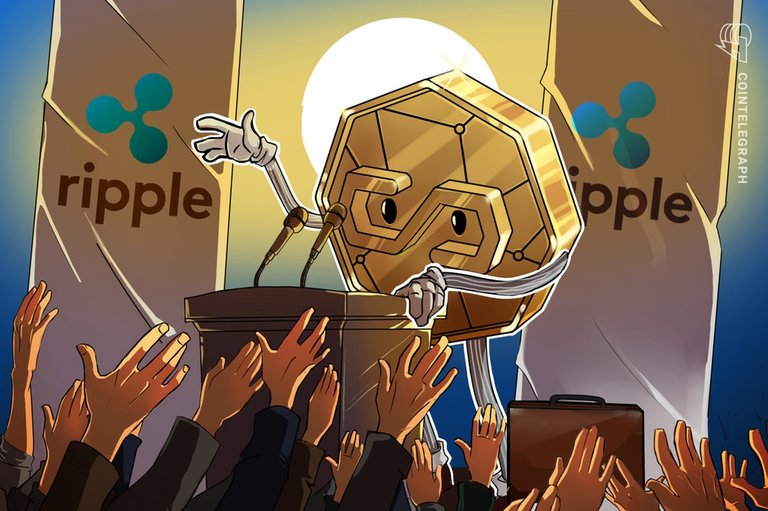At some point I've imagined CBDCs not outrightly called CBDCs given the reputation of the Central Bank and its relationship with the crypto ecosystem over the years.
Whilst not feasible, crypto is often speculated to replace Fiat and essentially the central banking system. At best however, crypto offers a non-centralized alternative financial system to what's actively devalued by the ruling governments of nations of the world.
Stablecoins Has Been A Huge Success
Tether’s USDT actively struggles with Ripple’s XRP for the #3 spot in the list of top crypto assets by market capitalization.
Currently, it ranks as the 4th most valuable asset based on blockchain technology with a market value of $140.43 billion and a reported revenue for the first half of 2024 reaching $5.2 billion.
Now I'm not going to go into details of how Tether’s USDT is backed, everyone knows it's a centralized stablecoin with significant arms in US treasuries, frankly the top #18 in the rankings of countries owning U.S. debt.
Wild right?
As per linked report, Tether owns $97.6 billion in U.S treasuries.
Now there's a ton of success stories if you want to follow up on Tether, it's made several investments over the years and actively expands its influence by simply running a stable asset on distributed networks.
It is however quite unfortunate that what dominates an ecosystem built on the concept of breaking free from traditional banking and its associated nations-state governmental influence is in-fact, a centralized stablecoin with known details on its ability to freeze user assets on-chain.
What's the point of using a borderless cash system built on freedom if the transacting currency can essentially restrict you when deemed fit?
The stablecoin market has been dominated not only by Tether, but also USDC, similarly centralized, some dog-shit option by Justin Sun and oh, DAI, which is now USDS apparently - supposed to be the decentralized option, but lots of controversial details to its rebranding that makes it difficult to argue in support of its decentralization.
Ripple Joins The Party With RLUSD
I have personally not come around to deeply researching Ripple and its blockchain, the XRP Ledger.
Frankly speaking, I only recently came to understand that the blockchain itself isn't called Ripple, rather the XRP Ledger, but it's hard to not mix these things up when media platforms heavily imply the former in their frequent reporting.
After Bitcoin, and maybe Ethereum, Ripple’s XRP and Cardona’s ADA has to be the most covered crypto assets and blockchains in the news, often boring price analysis that never leads anywhere because both Dino coins have frankly always lacked any upward momentum.
Just volumes and lots of media crap coverages which I suspect may be the reason I've been reluctant to read up on both blockchains.
Notwithstanding, Ripple has now ventured into the world of Stablecoins in a move to further solidify itself as the “banker’s coin/blockchain” and this is through the introduction of RLUSD, a stablecoin set to launch today, December 17.
To some, that phrase “banker’s coin” gets interpreted as Ripple’s XRP Ledger and payment system being some major technological advancements for improving global trade and inter-bank transaction facilitation.
This has attracted criticism from the Chainlink community with some citations that Chainlink has done more for the world of banking and traditional finance in relation to blockchain than Ripple has.
That said, I have never considered the whole focus on “banking” by Ripple to be some sort of representation of “technological solutions” but rather, a clear message that Ripple looks to be the banking system’s(essentially the government's) channel to the world of crypto - in a way that screams centralization.
There's literal reports of the Federal Reserve recognising Ripple on their website, and now, with recent developments of a stablecoin launch, key appointments in the dedicated advisory board for the stablecoin literally involves personalities from the very organisations against crypto.
RLUSD, a new United States dollar-backed stablecoin developed by Ripple, is set for a global exchange debut, the firm announced to Cointelegraph on Monday, Dec. 16.
The announcement came after the New York Department of Financial Services (NYDFS) approved the RLUSD launch, on Dec. 10, greenlighting the stablecoin’s entrance into global financial and cryptocurrency markets.
Ripple also announced key appointments to its RLUSD advisory board, including a former governor of the Reserve Bank of India and Kenneth Montgomery, former first vice president and chief operating officer of the Federal Reserve Bank of Boston.
Now I don't know these people, but Ripple’s victory over the SEC now feels more like some sort of government deal in disguise because there's no way in hell these early token sales, including ETH, shouldn't be ruled a security, all things considered.
CBDCs moving forward may not be spelt out as being “CBDCs” - it wouldn't really make any sense to do that at this point. The stablecoin market will be the government's means into crypto because every crypto investor uses them at the end of the day.
It is going to be interesting to see how RLUSD performs/plays out and what “unique solutions” it can come up with.
At this point, the ecosystem has to get back to adopting decentralized stablecoins. Luna’s UST did on us a number of damages but that should have simply been an event to learn from and develop above.
The government isn't just going to sit and watch millions earn financial freedom through blockchain, we ought to be several steps ahead of their moves.

Congratulations @badbitch! You received a personal badge!
You can view your badges on your board and compare yourself to others in the Ranking